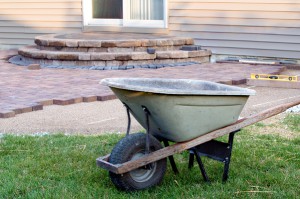Over the past two decades, gender equality has improved in the world of real estate brokers. While the status of women remains precarious in other fields, the real estate sector has managed to evolve and welcome more women. [……]
AD
Did you know that having a designated yoga space can have a positive impact on your practice? Keep reading for some ideas![……]
Are you constantly worried that parcels left at your door will be stolen while you’re out? Here’s how to prevent this from happening![……]
Radon, an element that is known for its radioactivity, has had a bad reputation for several years. Is it really something to worry about? Is it present across Quebec or only in certain regions? You’ll find several answers to your questions in this article.[……]
Choosing to settle in Estrie means taking advantage of the region’s potential and its many assets; innovations, nature and labor forces that will allow you to live comfortably all year round![……]
 iStockphoto LP[/caption]
iStockphoto LP[/caption]
The summer season brings a panoply of ideas to improve our outdoor environment. The patio is often at the top of the list, because it’s so practical for meals and for taking a minute to relax.
If you want a patio that will pass the test of time, while maintaining an elegant look, the most important thing is to install a foundation that will support the selected material.
First, outline the perimeter of the patio that you want to build and determine the height.
Then dig to a minimum depth of 18 inches.
Line the bottom and sides of the excavation site with a landscaping cloth that will prevent the crushed stone foundation from mixing with the ground while allowing water to flow through to ensure proper drainage.
Spread about four inches of 0-3/4 crushed stone (which means that the size of the stone varies between zero and three quarters of an inch in diameter), and use a plate compactor to compact it. Repeat both steps until the patio is level, less the thickness of stones used, plus one inch.[……]
 source: iStockphoto[/caption]
source: iStockphoto[/caption]
Fresh water is a precious resource. Even though Canada seems to have ample supplies, it accounts for only 7% of the planet’s renewable fresh water reserves. And just because those reserves are renewable, it doesn’t mean they’ll last forever. If we want our children, grandchildren and future generations to be able to benefit from this natural wealth, each of us has to do our share.
At home, there are many actions you can take to reduce how much water you use.
Indoors
The bathroom is the place in the home where the most water is used. Taking showers or baths and flushing toilets account for 65% of our consumption. It’s easy to cut down the quantity of water used in the bathroom by following these tips:[……]




